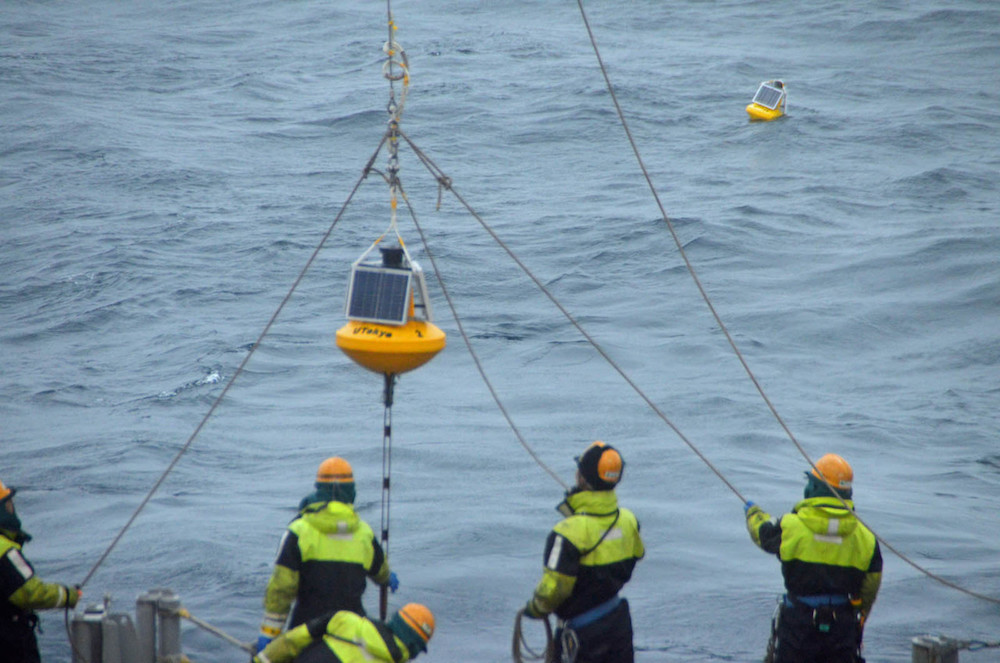Sailors, take warning: Decline in sea ice clears path for higher waves
Even though storms in the Arctic are no more powerful than they were in the past, the decline in sea ice means there is less to slow them down.

Receding sea ice is increasingly making Arctic routes a viable option for shippers, but with less ice comes greater potential for higher waves. While this has been recognized for some time, a paper, published on March 14 in the journal Scientific Reports, presents evidence of a correlation between increased expanses of open water and increased wave height.
Since 2011, some 200 vessels have sailed the Northern Sea Route, north of Russia. These ships are required to be able to withstand collisions with sea ice, but as wave heights increase, such ships will also need to be able to cope with icing caused by waves. For shippers, rougher seas also affect calculations of how long voyages will take, and ultimately, the viability of Arctic shipping.
The research behind the paper, carried out by the Arctic Challenge for Sustainability, a Japanese program, began by looking at 38 years’ worth of records of wave heights in the Laptev and Beaufort seas during ice-free periods ending in 2011. The review found that waves had grown by about 30 percent, and now regularly reached heights of 3 meters (about 9 feet).
[Thinning Arctic sea ice influences the atmosphere — with spinoff effects for Eurasia, study says]
The findings were confirmed by at-sea measurements made in 2016. Other studies have indicated wave heights of up to 5 meters (more than 16 feet) in the same area, but this, the paper’s authors suggest, is only in keeping with their expectations that, as summertime ice-free areas increase, wave heights will grow, posing dangers for shippers and coastal communities.
“The gradual change in wave heights and frequency over the ice-free Arctic Ocean would influence not only … the business strategy of the [shippers] using the Northern Sea Route, but also on the local life near the coastal region,” said Jun Inoue, one of the paper’s authors and an associate professor of polar science at Japan’s National Institute of Polar Research.
Previous studies have suggested that higher waves are the result of more powerful storms. While the paper did find a close correlation between wave height and the higher wind speeds recorded during the period (from regular maximums of 12.0 m/s (27 mph) to 14.2 m/s) the increases occurred despite the intensity of storms remaining relatively unchanged.
This led the authors to conclude that the change in wave height was due to the increased area of open water itself. Their explanation is that even though storms are no more powerful, the reduction in sea ice means there are fewer windbreaks.
[As ice recedes from the Northern Sea Route, Russia will need more icebreakers, not fewer]
For the waves the winds generate, this means a greater distance over which they can pick up speed, and the faster the wave is moving, the taller it will grow.
“As the ice starts to melt and ice-free water emerges in the Arctic Ocean, the wave behavior at this early stage may resemble that in an enclosed basin. Eventually, the area of ice-free water surpasses the scale of the storm, with conditions resembling that of waves under a hurricane,” the authors wrote.
The findings could eventually lead to improved estimates of wave heights, for the benefit of shippers and coastal communities. Further research, including additional at-sea measurements, will be required, but, for now, the authors say two things are certain.
The first is that the larger the ice-free water area, the greater the probability of encountering a large wave.
The second is that there is a natural limit to the size of waves generated as a result of open water. This, they wrote, it because “the effect of an increased encounter frequency stops as soon as the ice is completely lost from the sea during summer.”